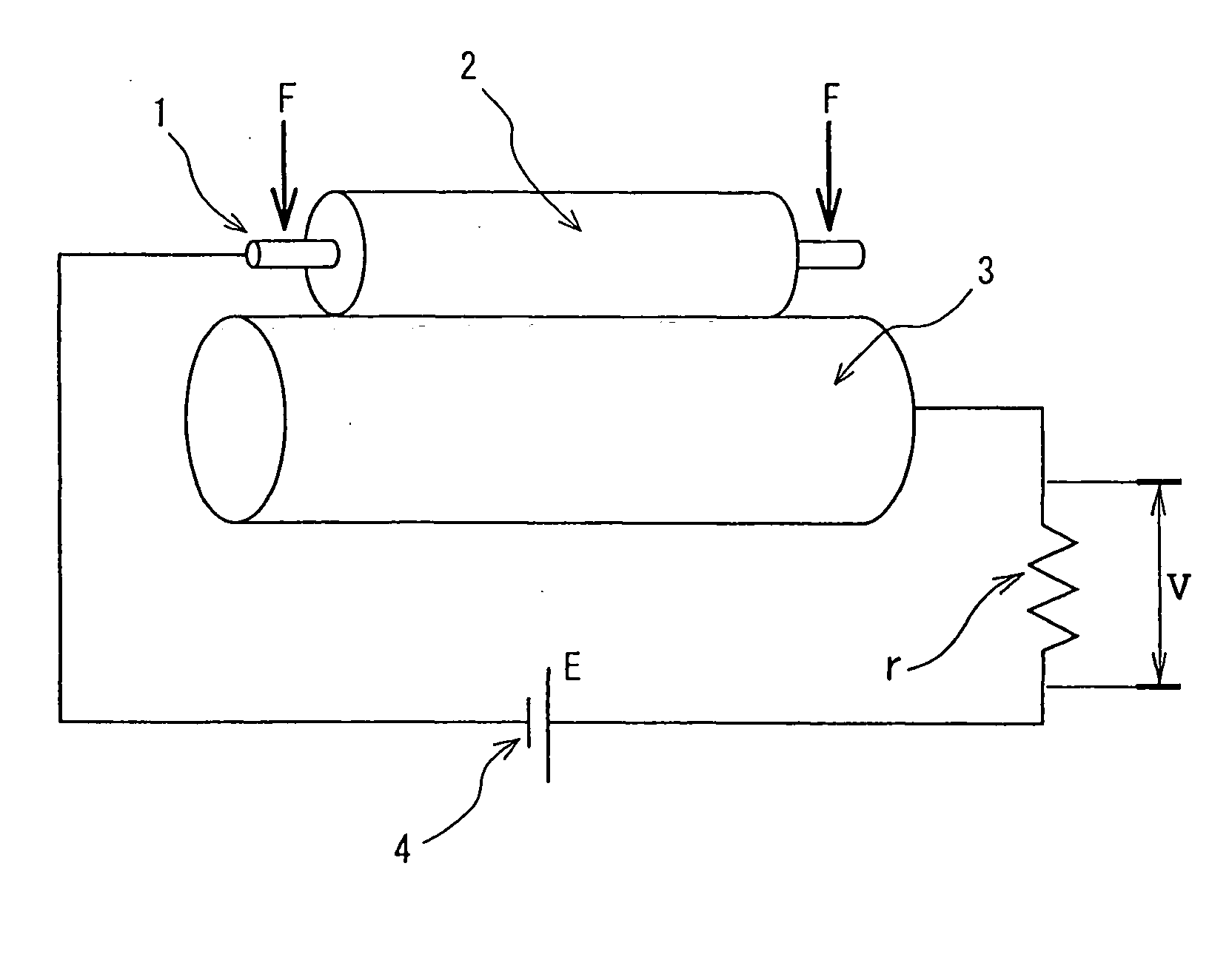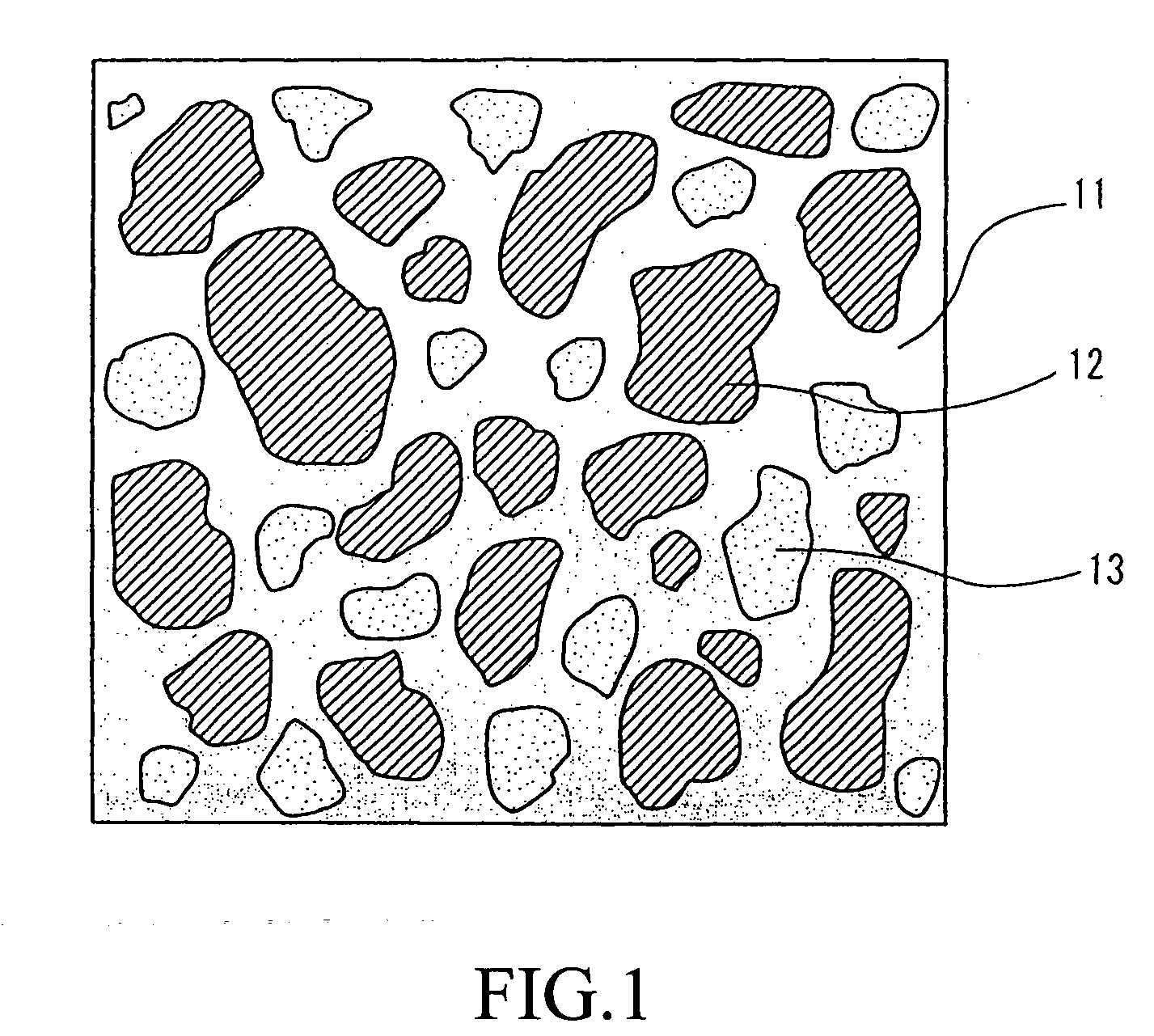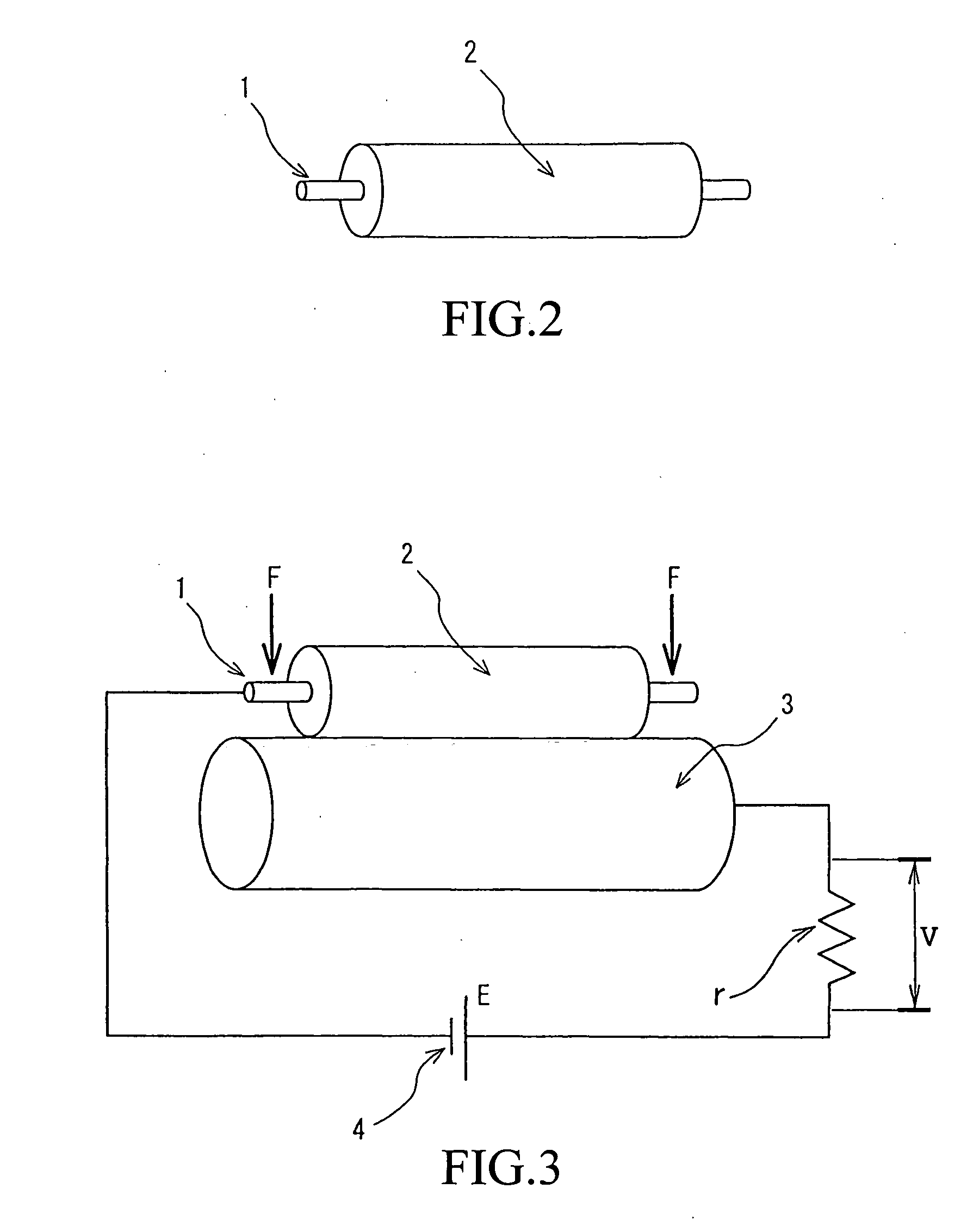Method for producing conductive thermoplastic elastomer composition and conductive roller composed of same
a technology of conductive thermoplastic elastomer and composition, which is applied in the direction of conductive materials, non-conductive materials with dispersed conductive materials, electrography/magnetography, etc., can solve the problems of difficult moldability of electroconductive polymer composition, inability to recycle, and difficulty in controlling the electric resistance of the conductive roller, so as to reduce the variation of the electric resistance of the conductive thermoplastic elastomer composition, the effect of suppressing the increase of the compression s
- Summary
- Abstract
- Description
- Claims
- Application Information
AI Technical Summary
Benefits of technology
Problems solved by technology
Method used
Image
Examples
example 1
[0230]The thermoplastic elastomer and the thermoplastic resin (component A), the EPDM rubber (component B), the softener, and the crosslinking agent were mixed with one another at the ratio shown in table 1 shown below. Thereafter the components were fused and kneaded at 200 rpm and 200° C. by using a twin-screw extruder (“HTM 38” produced by I-pec Inc.). After the component (B) was dynamically crosslinked with the crosslinking agent and extruded with the component (B) being dispersed in the component (A), the mixture was pelletized to obtain an elastomer composition (I).
[0231]The obtained pelletized elastomer composition (I), the EO-PO-AGE copolymer and the anion-containing salt having the fluoro group and the sulfonyl group (component C), the crosslinking agent, and the compatibilizing agent were mixed with one another at the mixing ratio shown in table 1 shown below. After the components were fused and kneaded at 200 rpm and 200° C. by using the twin-screw extruder (“HTM 38” prod...
examples 2 through 4 and 6 through 10
[0265]The thermoplastic elastomer and the thermoplastic resin (component (A)), the pelletized EPDM rubber (component B), the softener, a crosslinking agent 2, and zinc white were mixed with one another at the ratio shown in table 2 shown below. Thereafter the components were fused and kneaded at 200 rpm and 200° C. by using the twin-screw extruder (“HTM 38” produced by I-pec, Inc.). After the component (B) was dynamically crosslinked with the crosslinking agent and extruded, with the component (B) being dispersed in the component (A), the mixture was pelletized to obtain the elastomer composition (I).
[0266]The obtained pelletized elastomer composition (I), the EO-PO-AGE copolymer and the anion-containing salt having the fluoro group and the sulfonyl group (component (C)), the crosslinking agent 1, and the compatibilizing agent were mixed with one another at the mixing ratio shown in table 2 shown below. After the components were fused and kneaded at 200 rpm and 200° C. by using the ...
example 5
[0269]Except that the conductive thermoplastic elastomer composition did not contain the micro-capsule, the conductive roller was obtained by carrying out a method identical to that of the example 1.
PUM
| Property | Measurement | Unit |
|---|---|---|
| temperature | aaaaa | aaaaa |
| diameter | aaaaa | aaaaa |
| diameter | aaaaa | aaaaa |
Abstract
Description
Claims
Application Information
 Login to View More
Login to View More - R&D
- Intellectual Property
- Life Sciences
- Materials
- Tech Scout
- Unparalleled Data Quality
- Higher Quality Content
- 60% Fewer Hallucinations
Browse by: Latest US Patents, China's latest patents, Technical Efficacy Thesaurus, Application Domain, Technology Topic, Popular Technical Reports.
© 2025 PatSnap. All rights reserved.Legal|Privacy policy|Modern Slavery Act Transparency Statement|Sitemap|About US| Contact US: help@patsnap.com



